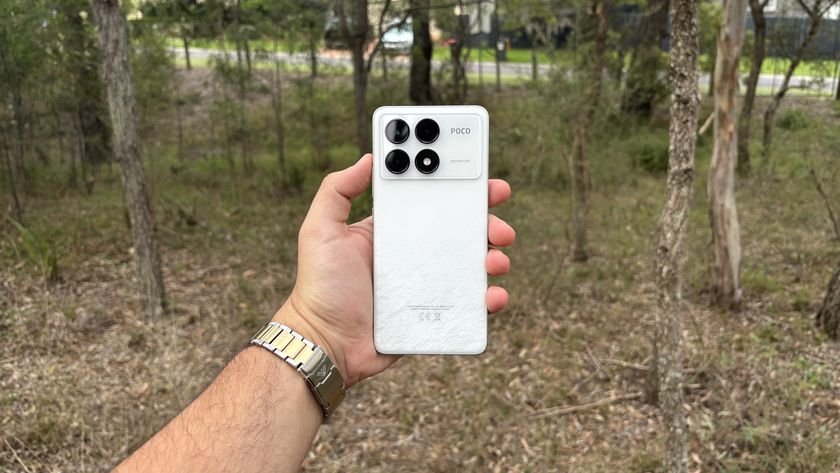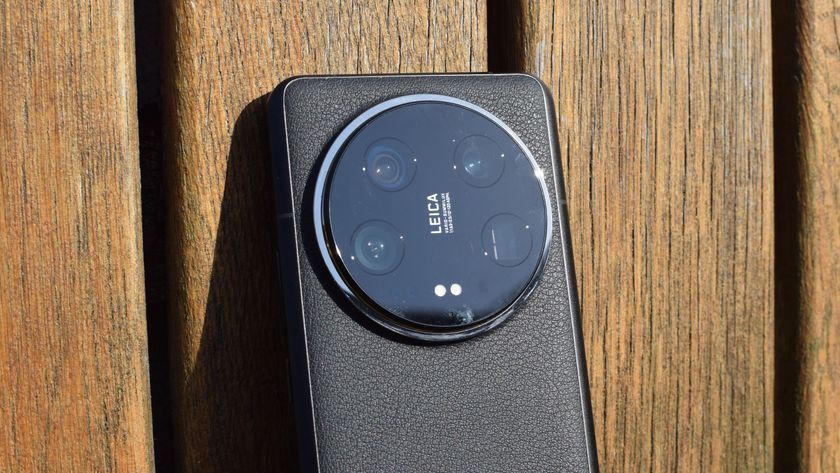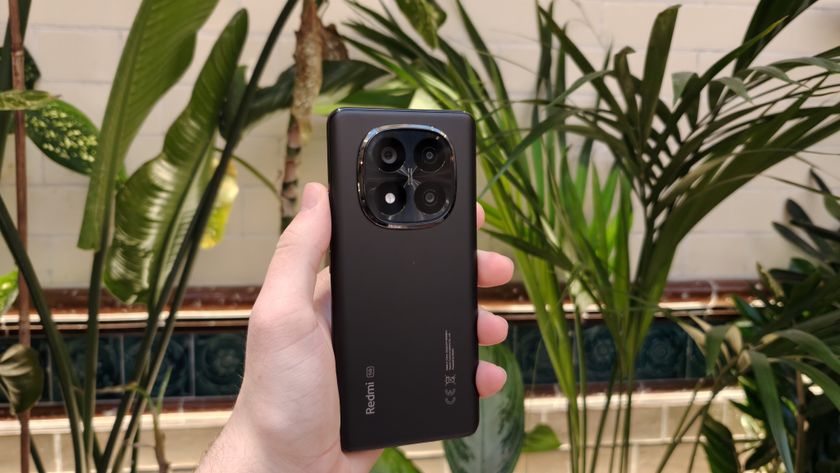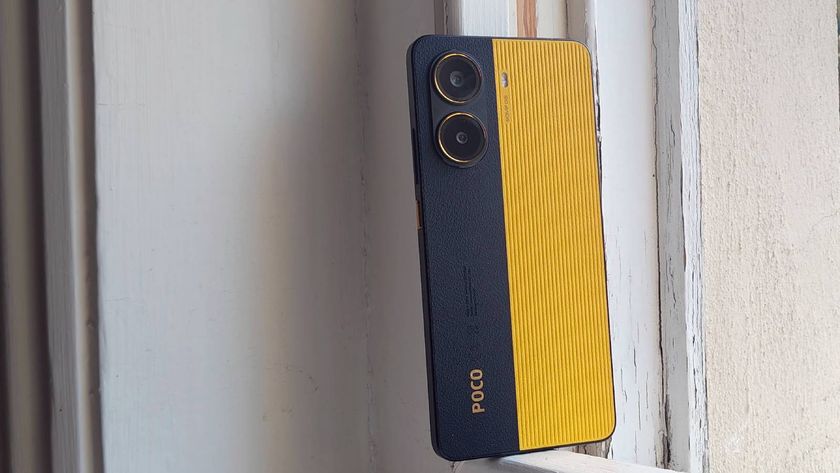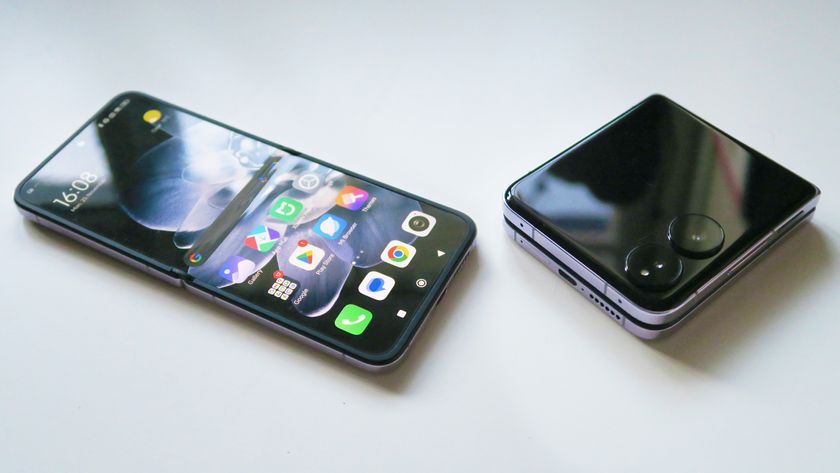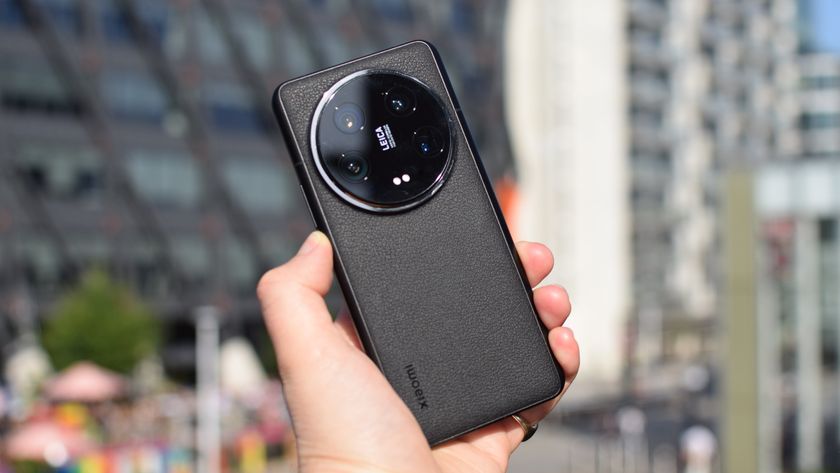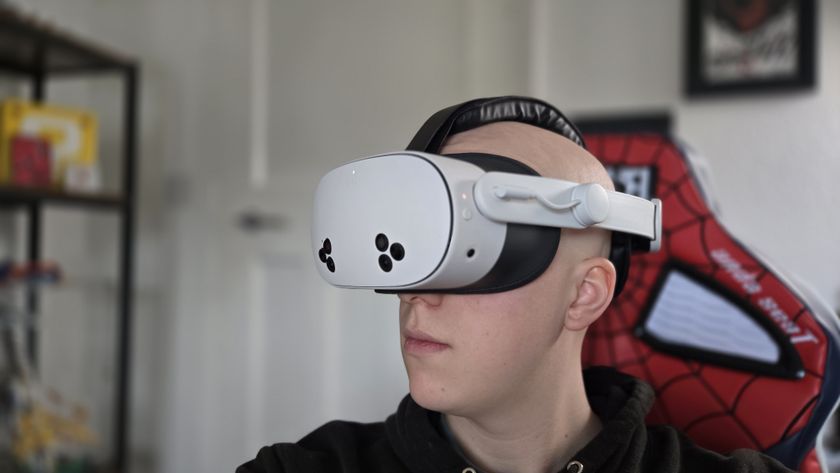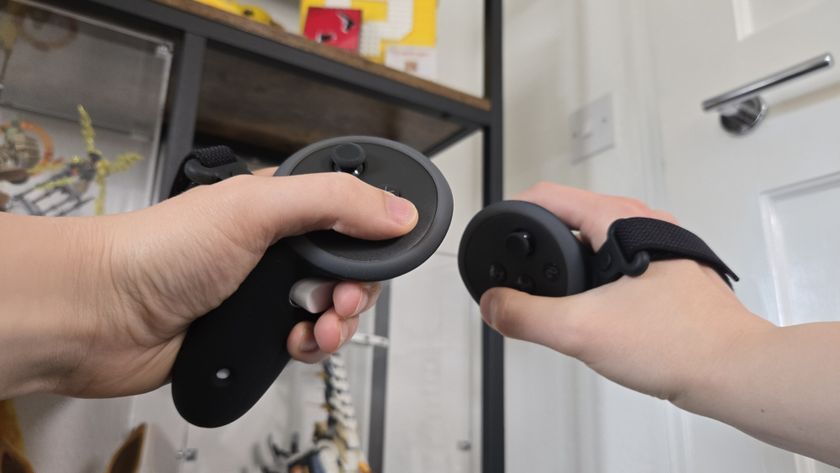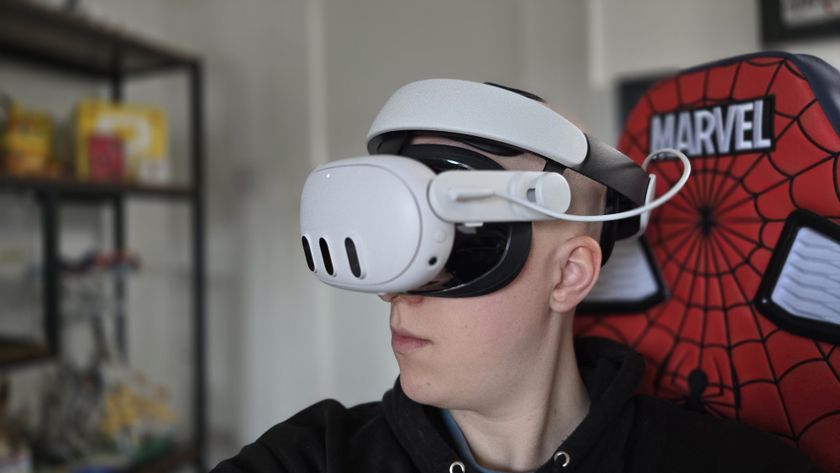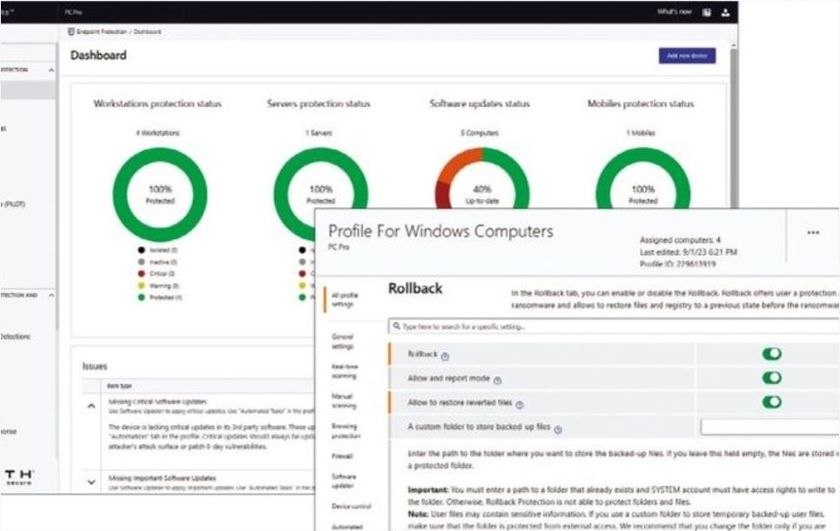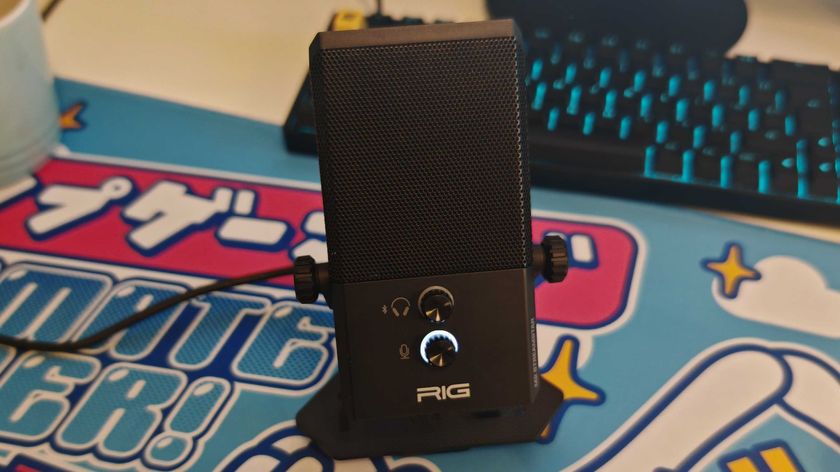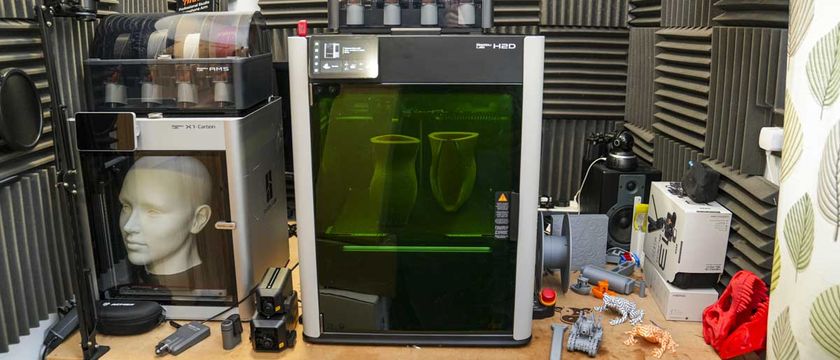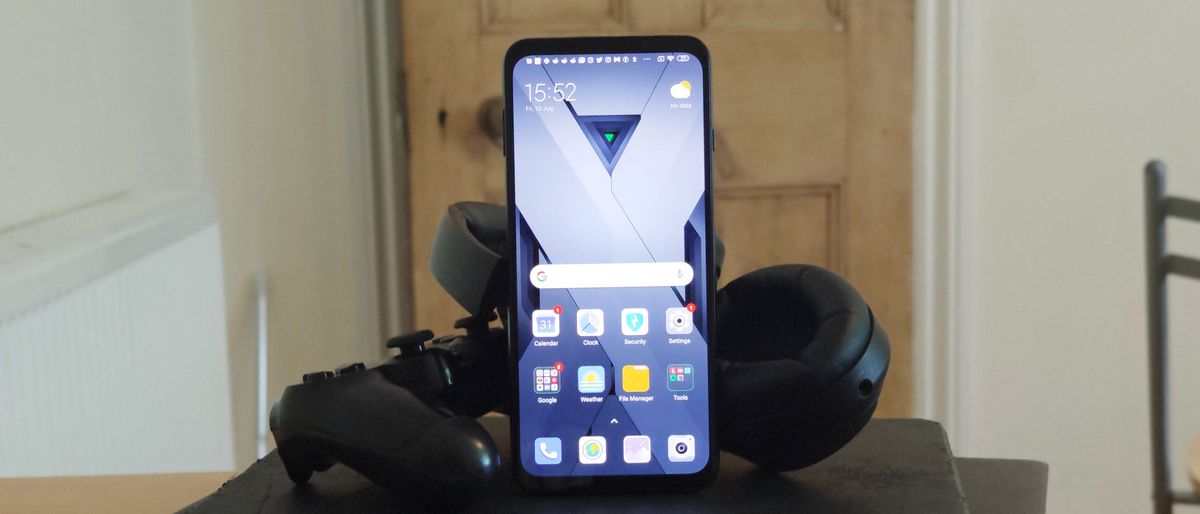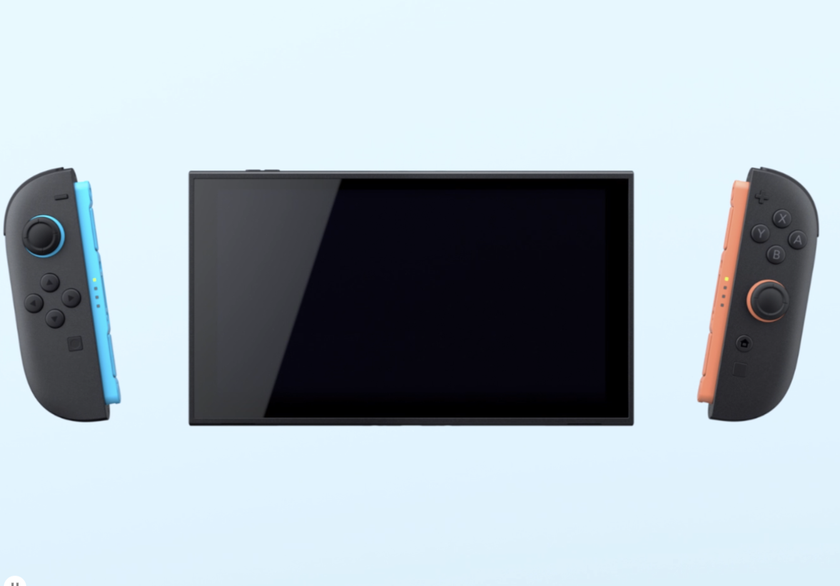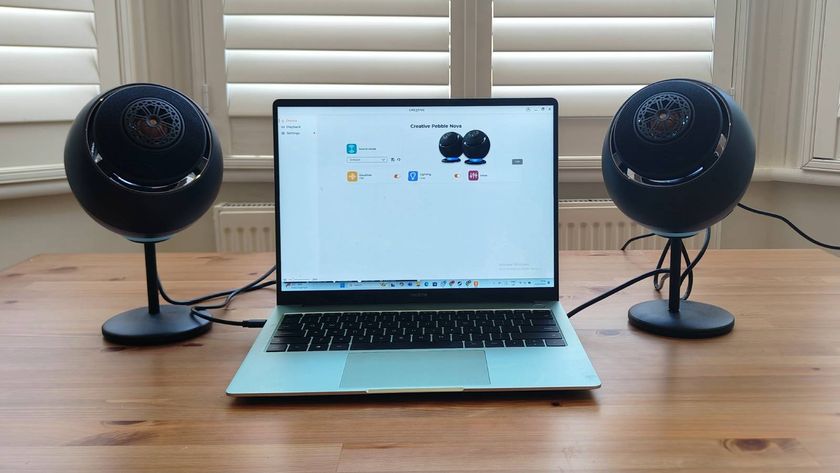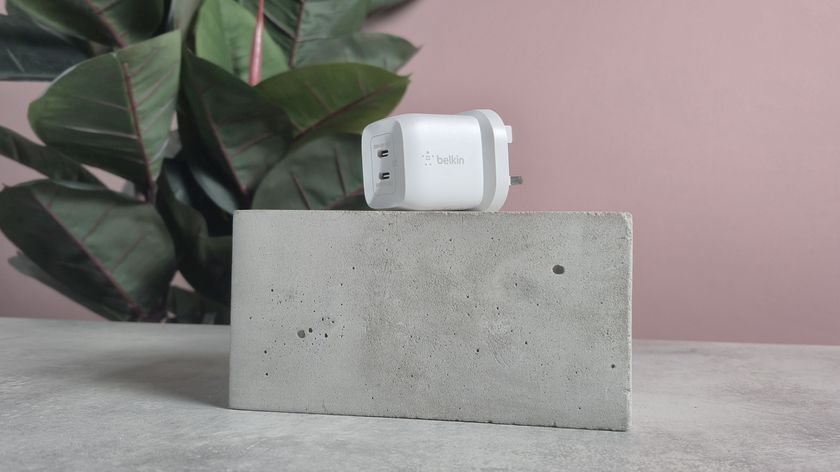TechRadar Verdict
If you're looking for a smartphone to play mobile games on, you'll be safely serviced with the Black Shark 3, as its hardware and software work well together to make your gaming experience a treat. It's also surprisingly good for photography, although it's not as good as dedicated camera phones. The actual build of it might put off many though, because it's big with a very bold appearance.
Pros
- +
Relatively affordable for the specs
- +
Cameras are surprisingly capable
- +
Shark Space is great for gaming
Cons
- -
Appearance may be divisive
- -
Will be too big for some hands
- -
Refresh rate is behind competition
Why you can trust TechRadar
Two-minute review
Let’s use the Black Shark 3 to play ‘Xiaomi bingo’, seeing which of the common attributes of the Chinese phone brand are on offer with this handset from its gaming-focused sub-brand.
Fairly top-end specs? Check. A price tag that’s lower than other devices with similar specs? Check. Surprisingly good camera? Check. An operating system full of bloatware with a few big issues? Nope – and that’s one feature we’re happy to find is missing.
Black Shark has previously downplayed its relationship to Xiaomi, but that seems more a PR stance than a reflection of any divide between the companies. The Black Shark 3 is a Xiaomi phone in the best way possible, and there’s a lot to like about it – if you’re an avid mobile gamer, that is.
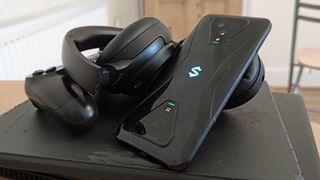
Price and availability
Design
Display
Cameras
Performance
Software
Shark Space
Battery
Should I buy it?
The Black Shark 3 is a great phone for the mobile gamer: between its top-end processor, oodles of RAM, large screen, and game launcher app that uses optimizations to maximize performance, people who find themselves spending most their phone time playing Fortnite, Call of Duty Mobile and other such titles will be more than happy with what they’re getting here.
The Black Shark 3 arguably leans a little too hard into the ‘gamer’ aesthetic though, just like the Black Shark 2. It comes in black or chrome colors, its rear is shaped like a large ‘X’ adorned with LED accents, and when you activate the dedicated Shark Space mode for optimized gaming performance a massive shark appears on your screen – so if you’re not a serious mobile gamer, or you are but you just don’t want to advertise the fact to the world, you might not like this phone.
We were also impressed by the Black Shark 3’s camera capabilities – we picked up the phone expecting it to be good for gaming, but we were blown away by how it was also good for photography.
It can’t compete with the best camera phones out there, but it doesn’t fall far short, thanks to vibrant pictures, snappy autofocus, accurate background blur effects for portraits and smart optimizations; it’s just a shame that there’s no telephoto lens or dedicated macro mode.
While the Xiaomi Black Shark 3 is definitely worth checking out, we’d be remiss if we didn’t mention its contemporary, the Nubia Red Magic 5G. That gaming phone has very similar specs but it’s different in two key ways: it has a 144Hz max screen refresh rate, much better for gaming than the Black Shark’s maximum of 90Hz, and in most regions it’s also a bit cheaper.
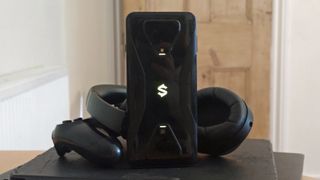
Still, the Black Shark 3 has a lot to recommend it, especially to avid photographers and fans of the Shark Space gaming mode, so if you’re in the market for a great gaming phone, read on.
There’s also a Black Shark 3 Pro coming which has a bigger screen, faster charging and physical trigger buttons on the side, which will be an even better phone for gaming, but it won’t be light on your wallet.
Xiaomi Black Shark 3 price and availability
- Price starts at $599 / £539
- Available from mid-2020
- Black Shark 3 Pro coming
There are two Black Shark 3 release dates as the two models, differentiated by RAM and storage space, were released at different times in June 2020, with the Black Shark 3 Pro available later in the year.
If you want the Black Shark 3 with 8GB RAM and 128GB storage, which we tested, you’ll be paying $599 / £539 (around AU$950, although based on precedent we don’t expect it to launch in Australia). The 12GB RAM and 256GB version of the phone costs $729 / £649 (roughly AU$1,150).
The phone comes in black or gray variants, but the gray one isn’t available in the 12GB/256GB combo, so if you want this specced-up version you’ll have to buy a black phone.
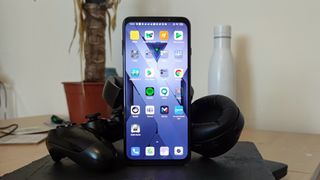
For context the Nubia Red Magic cost $579 / £539 (around AU$910), so in the US it’s cheaper than the Black Shark 3 and it’s on a par in most other countries. We’re also expecting that two other gaming-focused phones – the Asus ROG Phone 3 and Lenovo Legion – will cost a similar amount when they’re released, although at time of writing those phones haven’t been officially announced.
There are a range of optional-extra peripherals you can buy to add to your Black Shark 3: the FunCooler and FunCooler Pro are devices you attach to your device to keep it cool while you’re gaming, and there’s also a magnetic charging cable that lets you power up your phone without using the USB-C port (more on this later), a left-hand-side gamepad for the device (but not a right one, curiously), plus various cases, headphones, and more.
Each of these will set you back a bit, although no more than non-Black Shark equivalents.
Design
- Pretty big device
- Big X on back, and LEDs too
- Dedicated Shark Space toggle
The Black Shark 3 is a chunky phone, so avoid it if you’re looking for something compact that you can easily carry around in a pocket.
It measures 168.7 x 77.3 x 10.4mm, so it’s one of the thickest phones around, as well as tallest, if only by a couple of millimeters. At 222g it’s one of the heaviest handsets too. Still, it doesn’t compare to the even bigger Pro model, so this isn’t the biggest phablet you can buy.
Needless to say, a phone this big can be a little hard to carry about – it was a noticeable presence in trouser pockets, and when we put it in shallower shorts pockets it was constantly poking out the top, so this is a phone you may want to keep in your jacket or bag. The phone is also a little hard to hold one-handed, unless you’ve got big hands, with the power button out of easy reach for example.
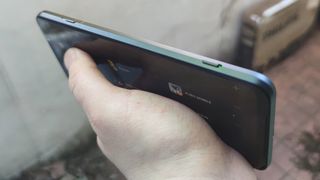
On the left edge of the phone is the volume rocker; on the right side, at the very top – and way out of reach without a fair bit of hand-shuffling – is the power button, and at the very bottom is the toggle to enter Shark Space, which we’ll look at in detail in the Software section of this review. On the bottom is the USB-C port, and on the top is a 3.5mm headphone jack.
There’s an in-screen fingerprint scanner here too, and (unlike the power button) this feels like it should be pretty easy to reach for most people.
We had an odd problem with the headphone jack – when we put the phone into pockets (top-first, as we feel is the normal fashion) the port would frequently pick up bits of fluff and scraps of tissue, and on several occasions we had to use the SIM tray tool to dig this out.
We’ve never had to do this with a phone before, and we’d guess it had something to do with the placement of the jack combined with the size of the phone (and perhaps the state of our trouser pockets).
The edges of the phone aren’t rounded, like on most phones, but are angular, meeting at a ridge that runs around the middle of the handset. It’s not necessarily uncomfortable to hold, but a device with rounded edges might feel better in the hand to many people.
As mentioned, the rear of the phone has the distinctive ‘X’ shape, which is an evolution on the design we’ve seen on the back of previous Black Shark phones. A triangular camera bump protrudes slightly from the upper part of this design, housing the three lenses and flash in a rather subtle way, while a mirror-image bump at the bottom of the phone houses a magnetic pin for a charging peripheral you can buy separately (more on that in the Charging section).
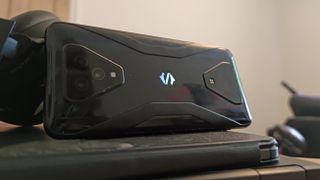
The Black Shark 3’s rear also sports three LEDs - two small ones at the foot of the camera bump and the top of the lower bump, and a larger one housed in the Black Shark logo. You can assign different functions to these – for example, they can light up red when the phone is charging, or flash green and blue when you’re gaming. We’re big fans of the fact that when you’re listening to music the LEDs flicker with cyan and violet patterns, making it look like they’re ‘dancing’ to your tunes.
The design on the back may scream ‘gamer’ rather loudly, but we’d argue that it isn’t obnoxious, as is the case with the aforementioned Nubia Red Magic 5G or the Asus ROG phones, and the black version we tested looks pretty understated and sleek – it would certainly outshine some of its rivals in a fashion contest.
Display
- 6.67-inch AMOLED screen
- 2K resolution
- 90Hz refresh rate
The Black Shark 3 has a fairly big display – as 6.67-inch AMOLED screen it’s on the large side (even in 2020, when we’ve seen a number of palm-stretching phones), but is dwarfed by its 7.1-inch Pro sibling.
The screen resolution is 1080 x 2400 (or 2K), so while it doesn’t reach the 2.5K resolution of some non-gaming phones, like the Samsung Galaxy S20 and Oppo Find X2, it still looks good. Colors look punchy, which is great for the many games that rely on a bright art style, although we did feel the max screen brightness was a little low.
The Black Shark 3 has a max screen refresh rate of 90Hz, which you can dial back to 60Hz to save battery if you want. This is a little lower than the 120Hz some phones have, and a good bit lower than the 144Hz of the Nubia Red Magic 5G, so people wanting the super-smooth scrolling experience that high refresh rates bring may want to look elsewhere. Saying that, not all games actually let you utilize super-high refresh rates in any meaningful way at the moment, your gaming experience will only be hampered if you’re playing the games that support 144Hz or 120Hz.
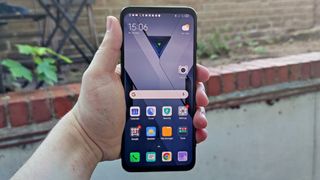
As with previous Black Shark phones, the Black Shark 3 doesn’t have a notch or ‘punch-hole’ cutout for the front facing camera, instead housing it in a slender bezel above the screen. This results in the entire screen space being reserved for gaming, although given that most punch-holes are obscured by your thumbs when you’re gaming anyway a punch-hole wouldn’t have been terrible here.
Xiaomi has made a noticeable push towards including always-on displays in its 2020 phones; the Black Shark 3 is the latest to get this feature, and you can opt for a range of designs to adorn the screen when you’re not using the phone.
Unlike the always-on displays on some other devices, though, you can’t check your notifications from the always-on display beyond seeing the app icon, or change music tracks when listening, so it’s arguably a little less useful than it could be.
Cameras
- 64MP main, 13MP ultra-wide, 5MP depth-sensing camera
- Surprisingly good photos
- Pictures often look very bright
The Black Shark 3 has a 64MP f/1.8 main camera, which is teamed with 13MP f/2.3 ultra-wide and 5MP f/2.2 depth-sensing snappers. As we’ve mentioned, we were pretty impressed with the pictures we took on the phone, given this isn’t a handset that’s designed with photography as its main focus, but it makes sense given we were also impressed by pictures taken on the Black Shark 2.
Before we talk about image quality though, it’s worth briefly touching on what the camera app is like to use. Switching between modes is seamless, autofocus is quick and generally pretty accurate, and in general the app felt very easy to use.
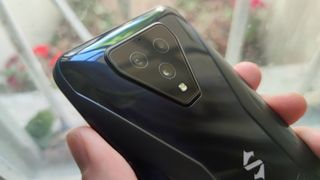
It was a little harder to zoom, as when you pinch your fingers no zoom bar appears to help you adjust the zoom setting – you just have to hope you can get the right level of zoom with your fingers. Similarly there’s a virtual button in the camera app for using the ultra-wide camera, you don’t just pinch your fingers to activate it like on every other device, and this took a little getting used to.
Pictures we took looked sharp, with particularly impressive-looking depth of field, likely thanks to the (relatively) high-res depth camera which can implement accurate-looking artificial background blur. This made the phone feel great for taking macro pictures, which made the most of the depth-of-field, but also snaps of subjects too.
Colors didn’t ‘pop’ noticeably, so users of Samsung or Apple phones might be a touch disappointed, but they were far from dim. In fact, images in general seemed very bright, sometimes curiously so: we took a few pictures at dusk – and in modes other than Night mode – that looked like they were taken during the day.
This brightness effect was most noticeable when using Portrait mode, as this mode seemed to boost brightness and reduce contrast to artificial-looking levels, and seemed to struggle with dynamic range more than ‘standard’ mode.
We’d guess there’s some overzealous post-processing going on here, and we preferred the naturalistic style of the standard photo mode. Saying that portrait snaps are far from bad, especially when taken during the day when extra brightness wasn’t too noticeable.


The Black Shark 3 was best at taking pictures during the day and in well-lit environments, but it certainly wasn’t a slouch in low-light scenarios either. Because of the keen image-brightening, pictures taken in low-light settings with the dedicated night mode weren’t that much different to snaps taken in standard mode, but there was a touch more detail at times.
Video mode lets you capture recordings up to 4K/60fps, so not quite the 8K available on some phones, but few people will mind. There’s also 1980fps slow-mo, which is twice as slow as the equivalent mode on most phones, but it can only record a very short burst of video, so we didn’t feel able to make the most of this feature.
The front-facing camera is a 20MP f/2.2 snapper, and pictures again showed good detail, but the keen image lighting clearly kicked into effect in Portrait mode again. Backgrounds also looked a little too blurred for our liking, but you can adjust the strength of the blur effect when you’re taking a picture, or after you’ve taken one, so we can’t criticize it much.
Selfies taken in the standard mode didn’t have this effect though, so we came to prefer it.
Camera samples










Performance
- Snapdragon 865 chipset
- 5G-compatible
- Pretty good benchmark results
As the Xiaomi Black Shark 3 is a gaming phone, ultimately it’s going to be judged on how well it runs games, and that’s largely (but not solely) down to performance.
The phone has a Snapdragon 865 processor from Qualcomm, which at the time of release (and likely until 2021) is the best chipset available to Android phones, and which you’ll also find in all the top phones of the year. It’s paired with 8GB RAM in the version of the phone we tested for the review – and mentioned, there’s also a 12GB version available.
When we put the phone through a multi-core benchmark test it returned a score of 3042. That puts it just a hair above the Samsung Galaxy S20 Plus, which scored 3034, and just below the Sony Xperia 1 II at 3085, but noticeably below the OnePlus 8 at 3401 and iPhone 11 Pro Max at 3424.
Despite the Black Shark 3 not providing the best processing power among current phones, that’s still a good score, and the phone is plenty powerful enough for gaming.
When playing games on the phone – and especially in the Shark Space mode, which we’ll get to – games were quick to load and always defaulted to the highest graphics settings, and we rarely encountered issues with even the most demanding games.
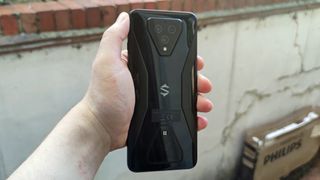
We tested a large selection of games on the phone – a bigger range than we normally would, as this is a gaming phone after all – and popular shooters like Fornite and Call of Duty Mobile, mobile ports like GTA: San Andreas, and less-demanding games like Clash of Clans and Mario Kart Tour all ran flawlessly.
The large screen and faster frame rate also enhanced the look of games, although after an extended bout of gaming the phone did heat up quite a bit.
With all this processing power on board for gaming, the phone is easily capable of less-demanding tasks too like opening social media apps, editing photos and navigating the menus.
The Black Shark 3 is a 5G-compatible phone, as all Snapdragon 865 phones are, and while 5G connection is still too sporadic in most areas to properly test out 5G gaming, it’ll likely be enhanced by the fact the phone has more antennae than most, so that when you’re gripping the phone while gaming your hands won’t completely block out data signals.
Software
- Android 10
- JoyUI overlay
- Icon to show where you just pressed
The Xiaomi Black Shark 3 runs Android 10, with JoyUI, a version of Xiaomi’s MIUI, laid over the top. In terms of appearance, JoyUI looks a lot like MIUI, with icons designed with cooler colors and rounded edges, but it’s better than that Android ‘fork’ in two key ways.
First, JoyUI comes without the unnecessary pre-installed apps, otherwise known as bloatware, that Xiaomi phones typically have. There were one or two apps on the Black Shark 3 that we didn’t touch, like Player Manual and Cleaner (the latter would be useful, but it’s already available through the Security app on the home screen), but we didn’t mind them too much, and we expect some users will like them.
Second, JoyUI has an app drawer, so if you swipe up you’ll find a scrollable list of all the apps you have installed, so you can easily hide them away from the home screens if you want without relegating them to some distant corner of your phone. In addition, you can sort this app drawer into categories like Communication and Entertainment, which makes it even cleaner and easy to use.
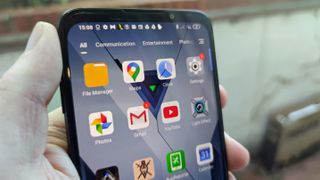
Swiping through the Black Shark 3 feels smooth and easy, thanks in equal parts to the powerful processor, 90Hz screen and clean layout of the software.
There’s an interesting feature in the Black Shark 3 software in that, when you press or swipe the screen a small circle appears when you pressed, which remains visible for a while. The purpose of this isn’t clear; we found it somewhat useful while playing games, as it showed us that we were frequently pressing in the wrong place to open menus in certain games, but not everyone will care for it, and we couldn’t find a way to turn it off.
Shark Space gaming mode
- Optimization mode for gaming
- Hides notifications
- Easy access to games
It’s time now to talk about Shark Space, the gaming mode that helps to make the Black Shark 3 such a great gaming phone. You can turn this on by flicking the aforementioned switch on the side of the phone, which opens up the Shark Space app.
Shark Space contains a carousel of all your installed games, so you can easily choose what you want to play and boot it up, and the mode has a range of settings that you can adjust to enhance your gameplay. You can choose to auto-reject calls, hide notifications, and tweak different settings to better optimize the phone for gaming.
When using Shark Space, gaming really does feel better – we noticed that the phone’s battery lasted longer gaming when we used the gaming mode than if we didn’t, not having notifications constantly getting in the way was useful, and the mode lets you easily map controls if you’re using a gamepad peripheral.
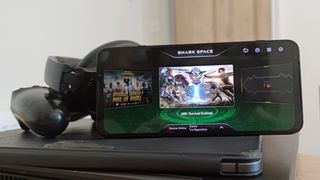
We had to get into the habit of booting up Shark Space ourselves though, as not many phones have dedicated gaming software, and lots of those that do have it automatically turn on when you boot up a game. If you’re buying the Black Shark 3 purely as a gaming phone you might find it easier to remember, though.
Battery life
- 4,720mAh battery
- Easy lasts a day unless you're gaming frequently
- Snappy wired charging
The Black Shark 3 has a 4,720mAh battery – we’d say around 4,500mAh is typical for a phone of this size, although perhaps mobile gamers might want a bit more juice.
We were impressed with the battery performance for average everyday use – so a fair amount of music streaming, regular social media checking, and some gaming here and there. Starting from full, we ended most days with about 30% charge left – and on one day we had a full 50% left – so we’d see this phone lasting you well into a second day if you’re not using it frequently.
Obviously, if you’re going to be doing a lot of intensive gaming your mileage could vary quite a bit, depending on how frequently you play, and what kinds of games you’re playing. Suffice to say, the Black Shark 3’s battery life can take quite a hit when you use it for extended gaming sessions, although that’s to be expected.
For example, half an hour of PUBG Mobile drained the battery by roughly 10%, while generally Call of Duty: Mobile and Mario Kart Tour were less demanding, while Fortnite depleted the battery faster.
We’d estimate that we went through 10%-25% of the Black Shark 3’s charge per hour of gaming, depending on the title, which of course won’t guarantee you a full day of general use if you’re playing for a few hours.
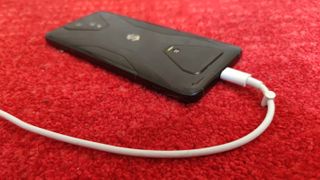
Black Shark has clearly identified this issue though, and you can buy a magnetic charger to use instead of the regular one that comes in the box. This charger connects to a pin on the back of the phone, and charges the device while you’re gaming, rather than you having to plug in a USB-C cable.
The magnetic cable is a little easier to ignore while you’re gaming than a big cable sticking out the phone, so some may prefer it to the USB-C cable – but it’s an additional outlay, and is very slow at charging your phone.
From 0%, the Black Shark 3 took an hour to power up to 25% using the magnetic cable. This feels very slow by today’s fast-charging standards, and we’d imagine that for some games it won’t actually add to the charge of the device while you’re gaming, just offset the power you’re using.
If you plug the USB-C cable in instead, the 30W charging is a lot snappier, and we’d generally recommend charging your phone this way unless you really want to use the magnetic pin and the few perks it brings. There’s no wireless charging option though.
Should I buy the Black Shark 3?

Buy it if
You want a gaming phone
The Black Shark 3 is designed for mobile gamers, and it's great for that audience. The software and hardware work together well, and you’ll have a hard time finding a device that’s better for gaming.
You like a good camera
The Black Shark 3 is better for taking pictures than you’d expect, particularly when it comes to depth-of-field effects and macro photography, although it’s not flawless.
A clean UI appeals to you
We found JoyUI a clean OS with few pain points, so if you’re a user of ‘stock’ Android, iOS, or a few of the other cleaner operating systems out there, you’ll be happy with what you find here.
Don’t buy it if
You’re not a mobile gamer
If you don’t frequently play intensive mobile games you’re not really in the core market for this device, and aside from gaming the Black Shark 3 doesn’t offer much that other phones can’t do as well or better.
You have small hands or pockets
The Black Shark 3 is a beast of a phone in terms of size, and if you like to use your phone one-handed, or you don’t want a device that’ll fill your entire pocket, you might find it too big.
You’d be ashamed to be seen with a phone that looks like that
The Black Shark 3 has a unique look, and given that many non-gaming Android devices share a similar, relatively prosaic design, it certainly stands out. However between that big rear ‘X’, the LED lights, and the angular edges, it may not stand out in the right way for everyone.

Tom Bedford joined TechRadar in early 2019 as a staff writer, and left the team as deputy phones editor in late 2022 to work for entertainment site (and TR sister-site) What To Watch. He continues to contribute on a freelance basis for several sections including phones, audio and fitness.
